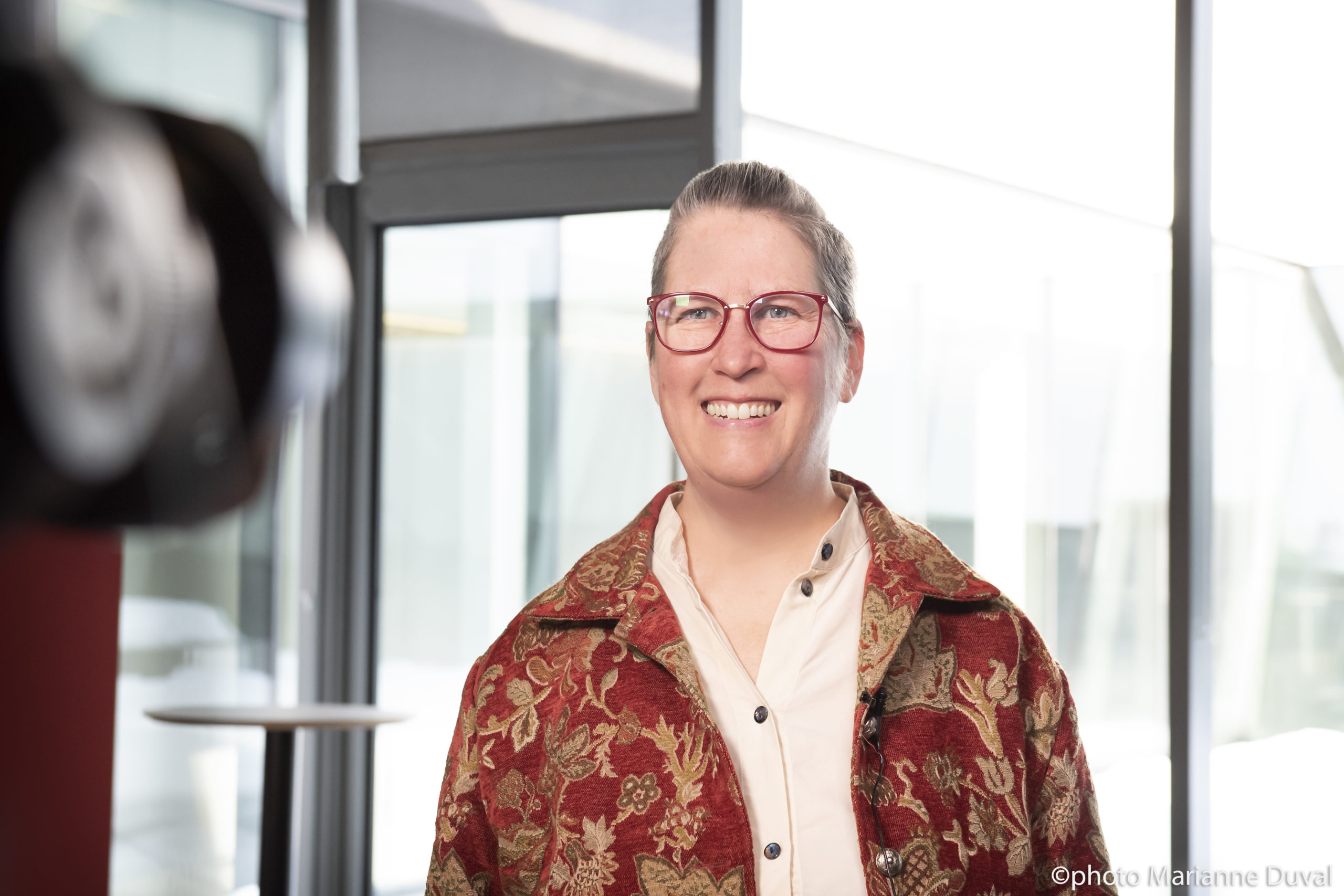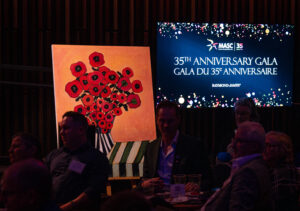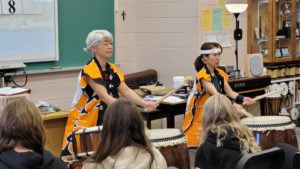Interview: Deidre Hierlihy talks lithography, parenting, and the physicality of letters
By Jessica Ruano | January 5, 2022

This interview was originally published on Apt613.ca
Deidre Hierlihy is an artist and educator. Hierlihy works in a variety of printmaking media including linocut, lithography, drypoint and collagraphy. Landscape and still life are common subjects. As an educator, Deidre teaches in-person and online classes. As well as presenting workshops through MASC to students and seniors, she teaches printmaking for adults and mixed media for children at the Ottawa School of Art. In this interview, she talks about the meditative nature of printmaking and how her experiences as a parent influences her approach to arts education.

Deidre Hierlihy. Photo by Marianne Duval.
MASC: In preparing for this interview, I had to look up the word ‘lithography,’ so I think it’s worth mentioning that lithograph means ‘stone print’ and that lithography is a printing process that uses a flat stone or metal plate with ink. What drew you to this particular kind of artwork and why do you find it so gratifying?
Deidre Hierlihy: There are many reasons why I am drawn to printmaking as my creative medium. Printmaking expresses things that cannot be as easily conveyed in other media. The marks are different, the emphasis is different. Most of my art practice is linocut, especially single colour, because I love the bold graphic quality of it. The velvety black ink on white paper, the slight embossing of the paper and the gentle shadows it casts. Strong but delicate. What draws me to lithography is the mark making. Most of the drawing I do on stone lithography is with a litho crayon. It draws like a graphite or conte stick: soft, rich, varied, gestural, and textured marks. The process of printmaking, the carving of the lino block, for example, is very meditative, very physical.
Nowadays most people communicate by text or email as opposed to handwritten letters. How do you entice a modern audience with calligraphy and brushwork?
Calligraphy, like printmaking is not only about the marks you put on the paper; it is also about the space you leave empty. A successful piece of calligraphy balances solid and void, black mark and white paper, the same as linocut. I’ve found in calligraphy workshops, kids are fascinated by hand lettering. The idea of forming letters, words, and thoughts that are beautiful, eye-catching, and rich in detail is an easy sell to kids who present much of their written work as typed documents.

Deidre Hierlihy. Photo by Marianne Duval.
At MASC, we invite our artists to celebrate and share their cultural heritage and identity in their workshops and performances. As someone who belongs to the 2SLGBTQI+ community, do you feel your identity is reflected in your work as an arts educator?
Belonging to this community makes me more aware and sensitive to the range and diversity of people. Being in a relationship that is not heteronormative also makes me more aware of pervasive cultural expectations around gender and sexuality. In the big picture though, it is my experience as a mother that makes me most sensitive to the different ways of being, learning and expressing of each individual child.
As a member of MASC, what do you gain through offering your workshops in schools and in the community?
I love sharing my passion of art and offering students a chance to play, and to express their creativity in new ways. The activities in my workshops challenge students to work in new ways. Their responses to the artistic challenge broadens their problem-solving skills and thinking. As an educator, I get great satisfaction nurturing this growth. Interaction with students’ creativity in turn feeds my art.

Calligraphy by Hierlihy.
Why do you think it’s important for our local community to have access to professional artists?
It is important for all people to be involved in the arts; making art, expressing our creativity, in its broadest sense, is essential for our mental health and general wellbeing. I would love to see every neighbourhood have a diverse group of artists and craftspeople to lead, inspire, and share joy.
Latest News
View All Articles



